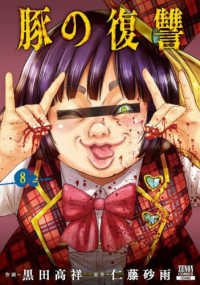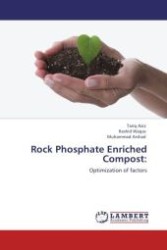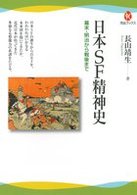- ホーム
- > 洋書
- > ドイツ書
- > Humanities, Arts & Music
- > History
- > antiquity
Full Description
Encountering evidence of postmortem examinations - dissection or autopsy in historic skeletal collections is relatively rare, but recently there has been an increase in the number of reported instances. And much of what has been evaluated has been largely descriptive and historical. The Bioarchaeology of Dissection and Autopsy brings together in a single volume the skeletal evidence of postmortem examination in the United States. Ranging from the early colonial period to the early 1900's, from a coffeehouse at Colonial Williamsburg to a Quaker burial vault in lower Manhattan, the contributions to this volume demonstrate the interpretive significance of a historically and theoretically contextualized bioarchaeology. The authors employ a wide range of perspectives, demonstrating how bioarchaeological evidence can be used to address a wide range of themes including social identity and marginalization, racialization, the nature of the body and fragmentation, and the emergence of medical practice and authority in the United States.
Contents
Foreword I: Debra L. Martin.- Foreword II: Michael Sappol.- Chapter 1: Introduction Kenneth C. Nystrom.- Section I: Evidence from Early Colonial America.- Chapter 2: Renaissance Anatomy in the Americas: A Bioarchaeological Perspective on the Earliest Skeletal Evidence of Autopsy in the New World Thomas Crist and Marcella Sorg.- Chapter 3: Skeletal and Artifact Evidence for Surgery and Autopsy at James Fort Karin S. Bruwelheide, Douglas W. Owsley, Jamie E. May, and Beverly A. Straube.- Chapter 4: A Dissection at the Coffeehouse? The Performance of Anatomical Expertise in Colonial America Ellen Chapman and Mark Kostro.- Section II: Evidence from Public Cemeteries.- Chapter 5: Partible Persons or Persons Apart: Anatomized Remains from the Spring Street Presbyterian Church Burial Vaults Shannon Novak.- Section III: Evidence from Medical Institutions.- Chapter 6: Teachings of the Dead: The Archaeology of Anatomized Remains fromHolden Chapel, Harvard University Christina J. Hodge, Jane Lyden Rousseau, and Michèle E. Morgan.- Chapter 7: Commingled Skeletal Remains from a Well on the Medical College of Virginia Campus Doug Owsley, Karin Bruwelheide, Merry Outlaw, Richard L. Jantz, and Jodi L. Koste.- Chapter 8: Structural Violence in New Orleans: Skeletal Evidence from Charity Hospital's Cemeteries, 1847-1929 Christine Halling and Ryan Seidemann.- Chapter 9: Dissection and Documented Skeletal Collections Jennifer Muller, Kristen Pearlstein, and Carlina de la Cova.- Section IV: Evidence from Almshouse Cemeteries.- Chapter 10: Autopsy, Dissection, and Anatomical Exploration: The Post-Mortem Fate of the Underclass and Institutionalized in Old Milwaukee Sean Dougherty and Normal Sullivan.- Chapter 11: "You couldn't identify your grandmother if she were in that party": The Bioarchaeology of Postmortem Investigation at the Milwaukee County Poor Farm Cemetery Patricia B. Richards,Catherine R. Jones, Emily Mueller Epstein, and Thomas J. Zych.- Chapter 12: "The mangled remains of what had been humanity": Evidence of Autopsy and Dissection at Philadelphia's Blockley Almshouse, 1835-1895 Thomas Crist, Douglas Mooney, and Kimberly Morrell.- Chapter 13: Structural Inequality of the Socially Marginalized and Postmortem Examination at the Erie County Poorhouse Kenneth C. Nystrom, Joyce Sirianni, Rosanne Higgins, Jennifer Raines, and Douglas Perrelli.- Chapter 14: Exploring Evidence of 19th Century Dissection in the Dunning Poorhouse Cemetery Anne Grauer, Vanessa Lathrop, and Taylor Timoteo.- Chapter 15: A Historical and Osteological Analysis of Postmortem Medical Practices from the Albany County Almshouse Cemetery Skeletal Sample in Albany, New York. Kimberly Lowe Lusignan.- Chapter 16: The anthropology of dissection and autopsy Kenneth C. Nystrom.








